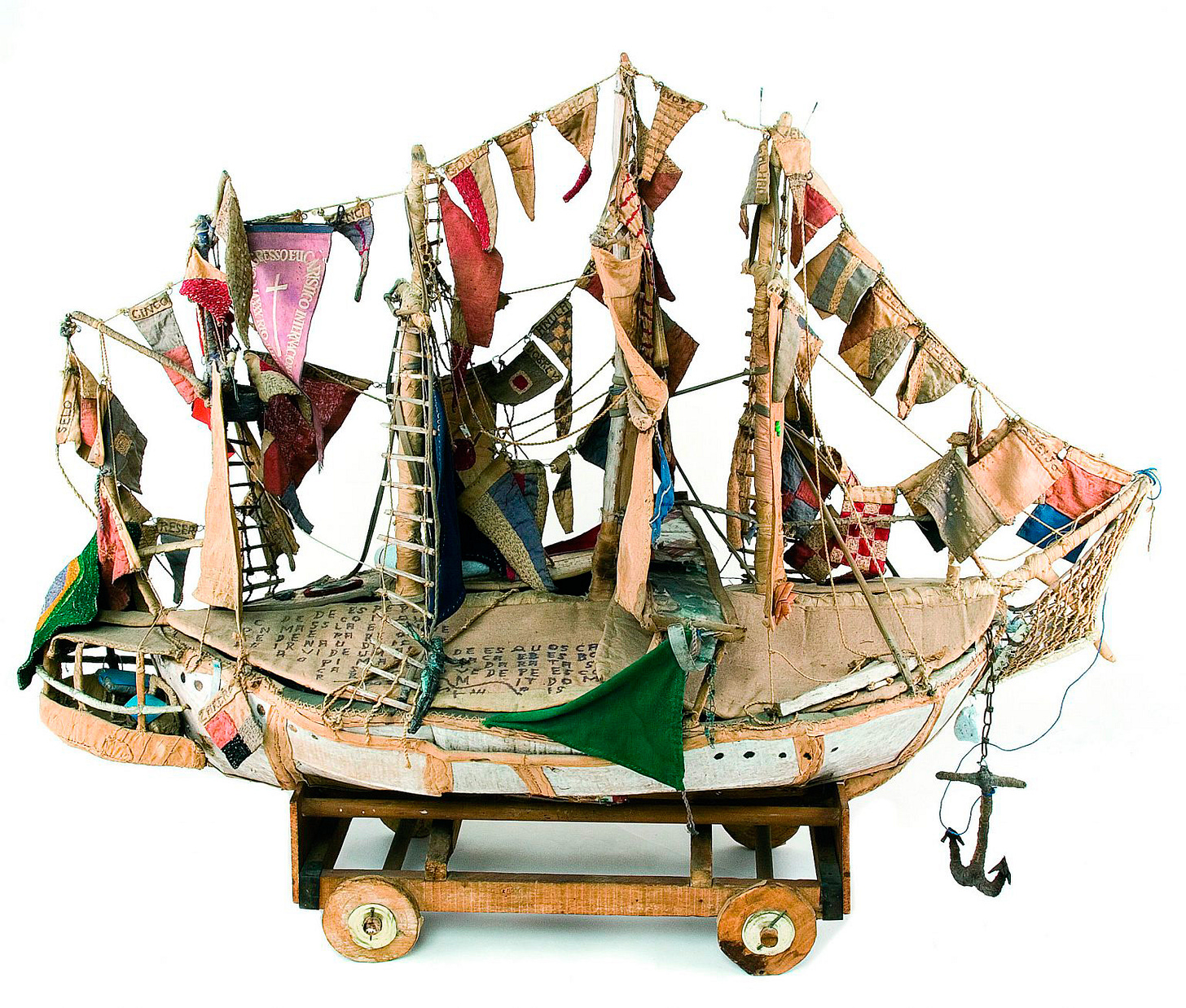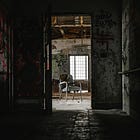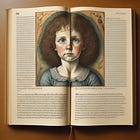Arthur Bispo do Rosario: An Unfinished Chapter of The Artist’s Mind by Kathryn Vercillo
"He would work with whatever materials were available to him, including everything from paper, cardboard and hospital linens, to buttons, rubber boots, and cutlery."

One of the things that I love most about doing a virtual tour for my books is that I get to share the things that didn’t make it into the final version of the book itself. I loved writing The Artist’s Mind, which shares short biographies of famous artists with mental health challenges and begins the conversation of trying to understand the myriad ways that those challenges impacted their art.
The book is just a starting point to the work that I’m doing in this area, so it already feels like I couldn’t share all that I wanted to, and then even what I initially wrote had to be cut down in order to fit all of the editorial and publication needs. And that’s fine but the Internet provides this great chance to share some of that other stuff that was, as they say, left on the cutting room floor.
So today, I wanted to share a chapter that didn’t end up in the book for a few reasons including that the artist’s story is very similar to that of August Natterer who was already in the book as well as that I didn’t have time to complete the research that would have fleshed the chapter out more. So, here is the unfinished, previously unpublished chapter, which will give you a sense of what the book includes - along with some notes at the end of what I’d add to complete it.
“Mental illnesses are like hummingbirds. They never land [but] stay two meters off the ground.” - Bispo
Brazilian artist Arthur Bispo do Rosario spent time in the navy and competed as a boxer, but when he was in his late twenties (his exact date of birth is unknown), he had a psychotic episode characterized by hallucinations. After having a vision in which God and seven blue angels descended from the sky, he came to believe that his life’s mission was to recreate the entire universe so that he could present the improved version to God when that day arrived. Believing that he was “conducting an army of angels,” Bispo entered a monastery and announced that he was there to make judgment upon both the living and the dead. He was diagnosed with paranoid schizophrenia and hospitalized, spending the next five decades in Rio de Janeiro asylums.
Once institutionalized, Bispo became a prolific artist.
He would work with whatever materials were available to him, including everything from paper, cardboard and hospital linens, to buttons, rubber boots, and cutlery. Sometimes considered a “found art” artist, Bispo created three-dimensional works like banners, sculptures, and even a boxing ring. He removed the thread from hospital uniforms and used it to embroider “hundreds of texts.”
One interpretation of Bispo’s work by art historians and psychologists is that it is autobiographical, like each artwork is a sort of visual journal entry. He reportedly incorporated every single item that he came across into his pieces. He also kept diligent, categorized notecards on objects he came across, as well as biographical details of everyone he met. Interestingly, Bispo didn’t consider himself an artist at all. He said that he created what he did simply because he felt compelled to do so, and even his opinion that the finished pieces were works of art at all is up for debate. Perhaps Bispo was living his life under the assumption that his original hallucination would come to be and that he must recreate the universe for Judgment Day. In that case, his works of art can be seen as the physical representation of that effort. His delusions did continue during his time in the asylum; he sometimes believed a god sat atop his head, and other times had delusions that he was turned into a king. Bispo lived in an attic room at the asylum, would go days without speaking to anyone, often refused all but the smallest amount of food, and could spend months at a time intensely working on his art pieces.
As discussed in the introduction to this section, a common thread of so-called “outsider artists” is that they are “discovered” by others (which, of course, brings up many issues discussed in the book.) In Bispo’s case, this “discovery” occurred in the early 1980s when the Brazilian Ministry of Health sent psychoanalyst Hugo Denizart to review the conditions at the institution where Bispo lived. Denizart intended to make a documentary of the asylum while he was there but, upon meeting Bispo, became so fascinated with the artist that the documentary, “A Prisoner of Passage,” ended up being about Bispo instead. Consequently, Bispo’s artwork was first exhibited in a Rio Museum in 1982, though Bispo died just seven years later.
Over the years, Bispo has become a much celebrated artist in Brazil. The Museo Bispo do Rosario Arte Contemporanea, part of the institution in Rio de Janeiro where he spent most of his life, holds a permanent collection of his work. The museum holds free art classes for all, including clients of the mental health services that are still available on site today. Bispo’s artwork has traveled around the world, too. It was shown in the Venice Biennale in the 1990s and again in 2013, as well as in London’s Victoria and Albert Museum in 2012. And due in part to his frequent use of text in his pieces, Bispo’s work is often appreciated by Brazilian graffiti artists, especially by the identical twin artist duo OSGEMEOS.

I would add …
If and when I’m able to fully complete this chapter for publication on Substack or in another book or elsewhere, here are the things I hope to add:
Closer look at specific art pieces created by Bispo and what they may say, if anything, about his mental health
Deeper investigation into the work of Hugo Denizart and his experience with Bispo; I haven’t even had a chance to watch the documentary, yet.
Exploration of how his intensive periods of art-making may have helped or hindered his mental health. Would he have stopped eating and speaking for months if he weren’t focused on making his art, for example?
Is the art itself a symptom of his mental health challenges? Without the delusions, would he have ever created art? Alongside more of a conversation furthering the question of whether his creations are art … if he says it’s not art then maybe it’s not … but if others experience it as art then maybe it is … and what does it mean either way?
A more comprehensive look at the influence of his art on others, particualrly in terms of art classes held today at the institution where he lived.
If you read this far, perhaps you liked the work. The work does take work. It only continues with support, so please consider subscribing. My annual rate starts at $10 per year.







The ingenuity of his art reminds me of the amazing toys children in the third world create from "found items." It is always inspiring to see people make beautiful things from limited resources.
Hey Kathryn, this is awesome! I actually just discovered this artist at an exhibit at SAIC here in Chicago. I fell in love with this ship and went home and did a deep dive on him. Create me free was the first thing that came up in google when I searched his name this morning!
I have so many thoughts churning about his work. I haven't had the time to get to know his life intimately, but I feel discomfort with the way his life is framed in the way a lot of folks tend to focus on his diagnosis. My thoughts are... if a person was able to negotiate and barter for all of these materials, and create 1000 beautiful pieces out of found objects while living in a prison cell...why couldn't he have existed in the real world? Clearly he was immensely intelligent and resourceful.
I'm leading a session on zoom this Thursday at 6pm CST on art through a therapeutic lens, and I'll be talking about his work! Let me know if you wanna come!